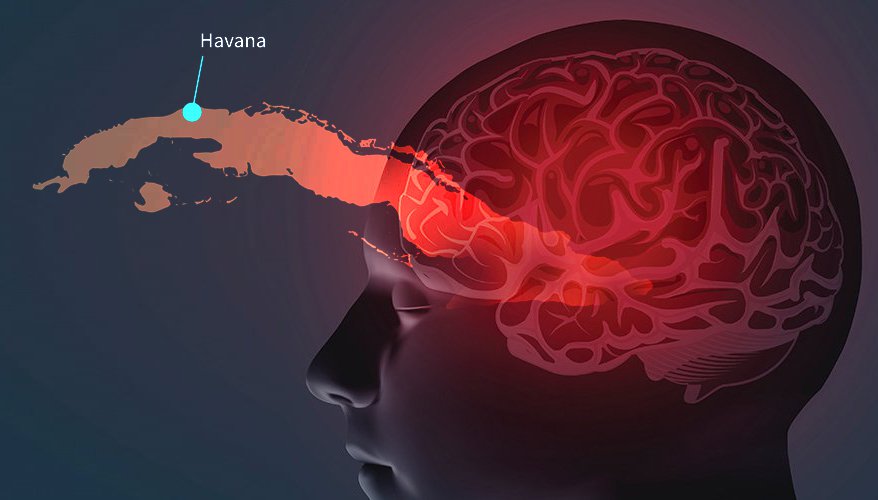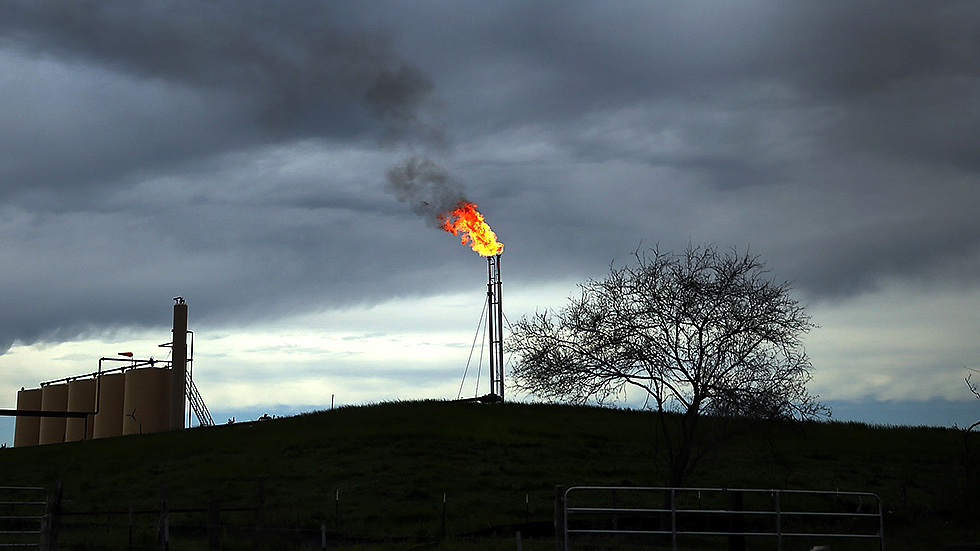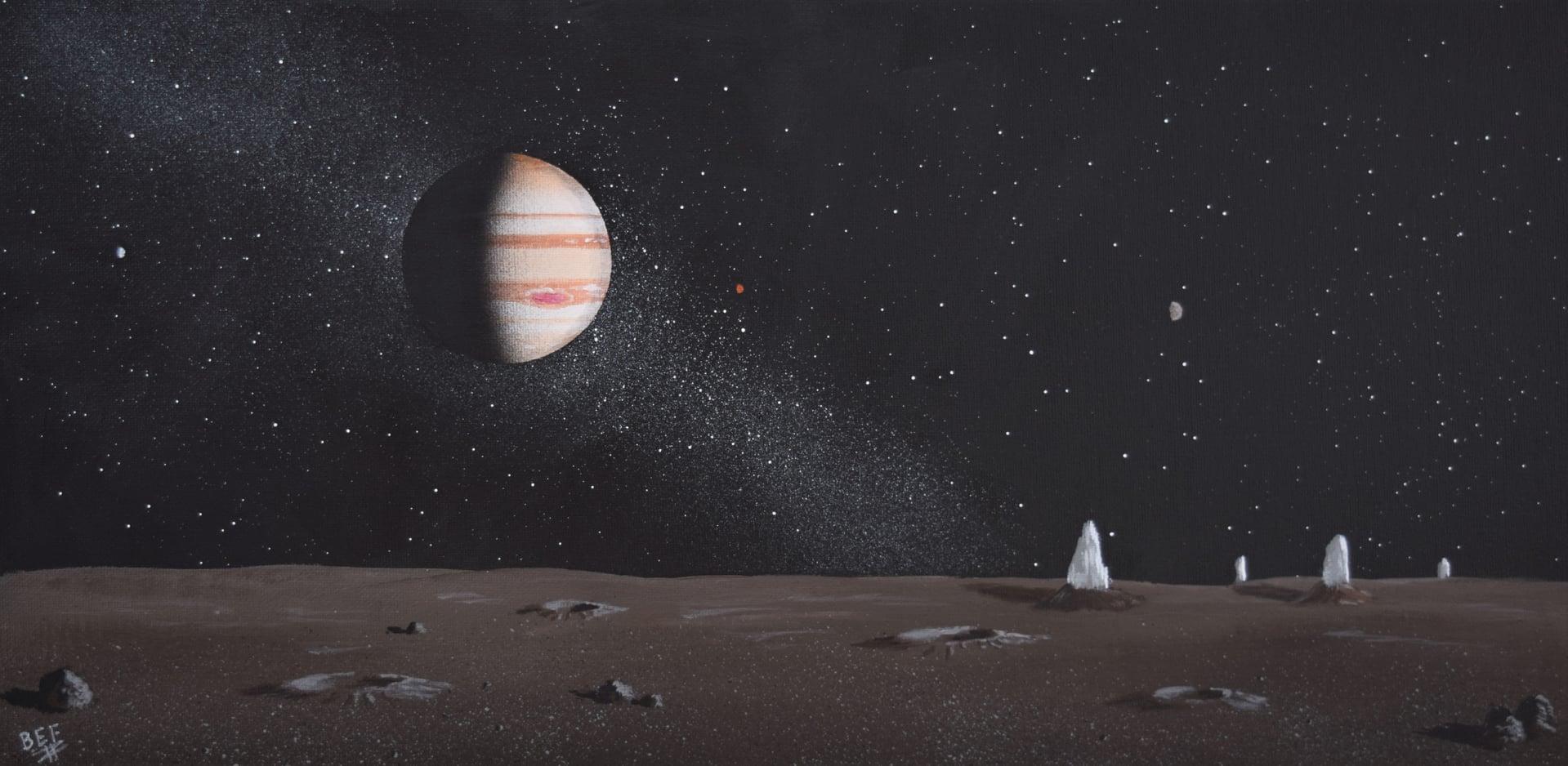Havana Syndrome

- 02 Apr 2024
Why is it in the News?
The mysterious so-called Havana Syndrome symptoms experienced by U.S. diplomats in recent years have been linked to a Russian intelligence unit, according to a joint media investigation released on April 1.
What is Havana Syndrome?
- Havana Syndrome is a term used to describe a set of mental health symptoms experienced by US intelligence and embassy officials in various countries.
- The symptoms include hearing sounds without any external noise, nausea, vertigo, headaches, memory loss, and balance issues.
- The syndrome first came to light in 2016 when US officials stationed at the country's embassy in Havana, Cuba, began reporting these symptoms.
- The exact cause of the syndrome remains unknown, but it has been linked to high-frequency microwave transmissions.
- The syndrome was named after the city where it was first reported, Havana, and has since been reported by US government officials and military personnel serving at various stations across the world.
- The symptoms of Havana Syndrome are diverse and range from pain and ringing in the ears to cognitive dysfunction.
- Some individuals have also reported hearing loss, memory loss, and nausea.
- The exact cause of these symptoms remains unknown, with theories ranging from sonic weapons to mass psychogenic illness.
- Despite ongoing investigations, there is currently no known cure for Havana Syndrome.
- Research continues into the potential causes and treatments for this perplexing condition.
Affected Regions:
- As per reports from US media outlets, over the past few years, officials have documented more than 130 instances worldwide, including in Moscow, Russia, Poland, Georgia, Taiwan, Colombia, Kyrgyzstan, Uzbekistan, and Austria, among others, with similar accusations emerging in early 2018 from US diplomats stationed in China.
- Status in India: The first such incident was reported in 2021 when a US intelligence officer accompanying CIA director William Burns to New Delhi exhibited symptoms of Havana Syndrome.
Recent Investigation Findings and Russia's Response:
- A year-long investigation revealed evidence suggesting that unexplained anomalous health incidents, commonly known as Havana Syndrome, may be linked to the use of directed energy weapons wielded by members of Russia's GRU Unit 29155, responsible for foreign operations and implicated in various international incidents, including the 2018 attempted poisoning of defector Sergei Skripal in Britain.
- Moscow has dismissed the allegations as "groundless," asserting the absence of convincing evidence, deeming the accusations baseless and unfounded.
What are Microwave Weapons?
- Microwave weapons, a type of directed energy weapon, utilize high-frequency electromagnetic radiation to generate heat in the water within a target's skin, resulting in pain and discomfort.
- Several nations are believed to have developed such weapons for use against both humans and electronic systems.
- China unveiled its "microwave weapon," the Poly WB-1, at an air show in 2014, while the United States has also designed a prototype called the "Active Denial System."
- The existence of these weapons has raised concerns regarding their potential misuse, and further research is necessary to understand their long-term effects and implications on human health and security.
Bridge Fuel

- 02 Apr 2024
Why is it in the News?
Natural gas has been called a ‘bridge fuel’ for countries looking to transition away from coal and oil dependency, and as they pursue a pathway towards renewables and electrification.
What is Bridge Fuel?
- Bridge fuel is a widely recognized term for fuels that aim to meet society's energy needs while minimizing environmental impacts during the transition to a clean, renewable energy economy.
- The primary objective of bridge fuels is to replace current fossil-fuel-dependent energy sources and pave the way for a greenhouse gas emission-free future.
- Natural gas is often considered a bridge fuel due to its lower greenhouse gas emissions during combustion compared to other fossil fuels.
- However, an ideal bridge fuel should also contribute to national energy independence and reduce pollution-related costs.
- Bridge fuels play a crucial role in balancing current energy demands with the long-term goal of achieving a sustainable, renewable energy landscape.
What is Natural Gas and How is it Formed?
- Natural gas, a non-renewable fossil fuel, is a mixture of hydrocarbon-rich gases.
- This colorless, odorless gas consists primarily of methane (70-90%), with smaller amounts of ethane and propane.
- Possible impurities include carbon dioxide, hydrogen sulfide, and nitrogen.
- Natural gas formation dates back millions to hundreds of millions of years ago when layers of organic matter (such as plants, animals, and diatoms) accumulated on land and ocean floors.
- Over time, these layers were buried under sediment and rock. Intense pressure and heat transformed this carbon and hydrogen-rich material into coal, oil, and natural gas.
- Today, natural gas reserves are found deep within the Earth's crust, often alongside other hydrocarbon deposits like coal and crude oil.
- The extraction, processing, and utilization of natural gas play a critical role in meeting global energy demands while transitioning towards cleaner, renewable energy sources.
Applications of Natural Gas:
- Natural gas undergoes processing and conversion into cleaner fuels for various applications.
- During processing, several valuable by-products like propane, ethane, butane, carbon dioxide, and nitrogen are extracted for further use.
Key uses of natural gas include:
- Generating electricity and heat, serving as a primary energy source for power plants.
- In compressed form (CNG), it fuels vehicles, providing a cleaner alternative to traditional gasoline or diesel.
- Powering boilers and air conditioning systems for residential, commercial, and industrial purposes.
- Manufacturing fertilizers, particularly ammonia, support the agricultural sector.
- As a cleaner fossil fuel, natural gas has a lower environmental impact than coal, emitting 50% less CO2.
- This makes it a critical component in the global shift towards more sustainable and eco-friendly energy solutions.
Leap Second

- 02 Apr 2024
Why is it in the News?
Glaciers are melting so fast that we may need to delay adding that 'negative leap second' to keep clocks aligned with Earth's rotation.
What Is a Leap Second?
- Leap seconds serve as a tool to synchronize global timekeeping with the Earth's gradually slowing rotation due to factors such as the melting and refreezing of ice caps.
- Introduced in the early 1970s, leap seconds are added periodically to Coordinated Universal Time (UTC) to align it with the Earth's actual rotation time.
- UTC is derived from the combined output of over 300 highly precise Atomic clocks worldwide, which offer accuracy within 1 second over millions of years.
- In contrast, Astronomical Time (UT1) corresponds to the Earth's rotation and determines day length.
- The primary reason for leap second additions is the irregularity of Earth's rotation, influenced by various factors like the moon's gravitational forces, causing ocean tides.
- This creates a gradual desynchronization between UTC and UT1. When the discrepancy between UTC and UT1 nears 0.9 seconds, a leap second is added to UTC, ensuring global timekeeping remains aligned with the Earth's rotation.
- Since its introduction, 27 leap seconds have been added to UTC, typically on June 30 or December 31.
- The leap second system continues to serve as an essential mechanism for maintaining synchronization between atomic timekeeping and the Earth's rotation.
What is Negative Leap Second?
- A negative leap second is a proposed time adjustment involving the subtraction of one second from our clocks to synchronize them with Earth's rotation.
- Unlike positive leap seconds, which are added to account for slower rotation, a negative leap second would address the Earth spinning faster than usual.
- So far, no negative leap second has been implemented since Earth's rotation has generally been slow in recent decades.
- However, as Earth's rotation has recently accelerated, timekeepers are considering using negative leap seconds for the first time.
- The International Earth Rotation and Reference Systems Service (IERS) closely monitors the Earth's rotation and determines when to add or subtract leap seconds.
- A decision to implement a negative leap second would serve as a corrective measure, ensuring our timekeeping systems remain aligned with the planet's rotation.
- While negative leap seconds have yet to be utilized, they offer a potential solution to the challenge posed by variations in Earth's rotational speed, ensuring the ongoing synchronization of our timekeeping methods with the planet's natural rhythms.
Presence of Ozone on Jupiter's Moon Callisto

- 02 Apr 2024
Why is it in the News?
An international team of scientists, including from India, has discovered strong evidence indicating the presence of ozone on Jupiter’s moon Callisto, shedding light on the complex chemical processes taking place on icy celestial bodies in the Solar System.
Study on the Formation of Ozone in Callisto's Icy Environment:
- A recent study examined the chemical evolution of sulfur dioxide (SO2)-rich astrochemical ice found on Callisto's surface when exposed to ultraviolet (UV) radiation.
- The investigation revealed a unique signature indicating the formation of ozone, which could have implications for the potential habitability of the Jovian moon.
- Callisto is Jupiter's second-largest moon and the third-largest moon in our solar system.
- It has a relatively stable surface, which could play a vital role in preserving subsurface oceans or potential habitats beneath its icy crust.
- The study analyzed UV absorption spectra data from ice samples containing SO2, a primary component of Callisto's surface ice, and observed the generation of ozone under UV irradiation.
- Ozone formation on Callisto could have implications for the moon's astrobiological potential, as ozone can protect the surface from harmful radiation.
- Further research is needed to better understand the implications of this discovery on Callisto's habitability and the potential for future exploration missions.
Callisto's Distinctive Environment:
- Following Saturn, Jupiter boasts the second-highest number of moons in the Solar System, with Callisto ranking among its largest moons and holding the position of the third-largest moon overall, after Ganymede and Titan.
- Comprised predominantly of water ice, rocky elements, sulfur dioxide, and traces of organic compounds, Callisto presents a compelling potential for harboring life beyond Earth within the Solar System.
- The moon's extensively cratered surface bears witness to a lengthy history of impacts from asteroids and comets.
Importance of the Research:
- The identification of ozone on Callisto hints at the existence of oxygen, a crucial component essential for the development of intricate molecules vital for life, including amino acids, thus prompting inquiries into the moon's potential for sustaining life.
- This finding also has implications for other icy moons within our Solar System, offering insights that could broaden our comprehension of habitable environments beyond Earth.
Significance of Ozone:
- Consisting of three oxygen atoms bonded together, the ozone molecule plays a pivotal role in shielding life on Earth.
- Situated in the lower region of the Earth's stratosphere, approximately 15-35 kilometers above the surface, the ozone layer acts as a protective barrier.
- Without this layer, ultraviolet radiation would intensify, posing significant threats to various species and disrupting ecosystems.
- Ultraviolet-B and ultraviolet-C, with wavelengths ranging from 290 to 320 nanometers and 100 to 280 nanometers respectively, can cause DNA damage, and mutations, and elevate the risk of skin cancer and cataracts in humans.
- Furthermore, ultraviolet light can impede plant growth and adversely affect diverse organisms.
Voter Verifiable Paper Audit Trail (VVPAT)

- 02 Apr 2024
Why is it in the News?
The Congress has hailed as an “important first step” the Supreme Court’s notice to the Election Commission and the Centre on a plea seeking a complete count of VVPAT slips and said the matter should be decided before the Lok Sabha polls commence.
What is the Voter Verifiable Paper Audit Trail (VVPAT)?
- The Voter Verifiable Paper Audit Trail, or VVPAT system, was first introduced in 2014 for the first time during the 2014 Lok Sabha Elections.
- The ECI conducted pilot tests of VVPAT systems in a few constituencies in 2011, and after successful trials, VVPAT was gradually deployed across all polling stations in subsequent elections.
- It is connected to Electronic Voting Machines (EVM) and enables voters to confirm that their votes were cast as intended.
- The concept of VVPAT was to enhance the credibility and transparency of EVMs.
What are VVPAT Slips?
- VVPAT slips are an integral part of the EVMs used in elections.
- It provides a physical paper trail for voters to verify that their vote has been correctly recorded by the EVM.
- It ensures transparency and accountability in the electoral process by allowing voters to verify their vote before casting it finally.
- The VVPAT produces a paper slip that permits the voter to confirm the accuracy of their vote on the EVM.
- This slip displays the name and symbol of the party chosen by the voter.
- Additionally, the machine features a transparent window through which the voter can observe the printed slip.
- Subsequently, the slip is securely deposited into a sealed compartment within the machine.
- However, in the event of a dispute, this sealed box can be opened for further examination.
Controversies Surrounding VVPAT:
- Despite its intended purpose of enhancing transparency, VVPAT has been subject to several controversies over the years.
- Some critics have raised concerns about the reliability of VVPAT systems, citing instances of malfunctioning printers, paper jams, and discrepancies between electronic and paper records.
- The Opposition parties within the INDIA bloc have been advocating for the full counting of VVPATs, to bolster public trust in the EVMs, which itself has been subjected to intense scrutiny recently.
- Their concern has mostly stemmed from allegations of delay in the printing and displaying of VVPAT slips for every vote, which they claim can significantly increase the time required for vote counting.
Supreme Court’s intervention in VVPATs:
- In April 2019, the SC asked the poll panel to increase the number of EVMs that undergo VVPAT physical verification from one to five per assembly segment in a parliamentary constituency.
- In the month of May the same year, the Supreme Court dismissed a writ petition seeking 100 percent counting of VVPAT in the 2019 Lok Sabha elections.
- Earlier in the same month, the Supreme Court had also dismissed the review petition filed by opposition parties to increase verification of VVPAT-EVM to 50 percent.
